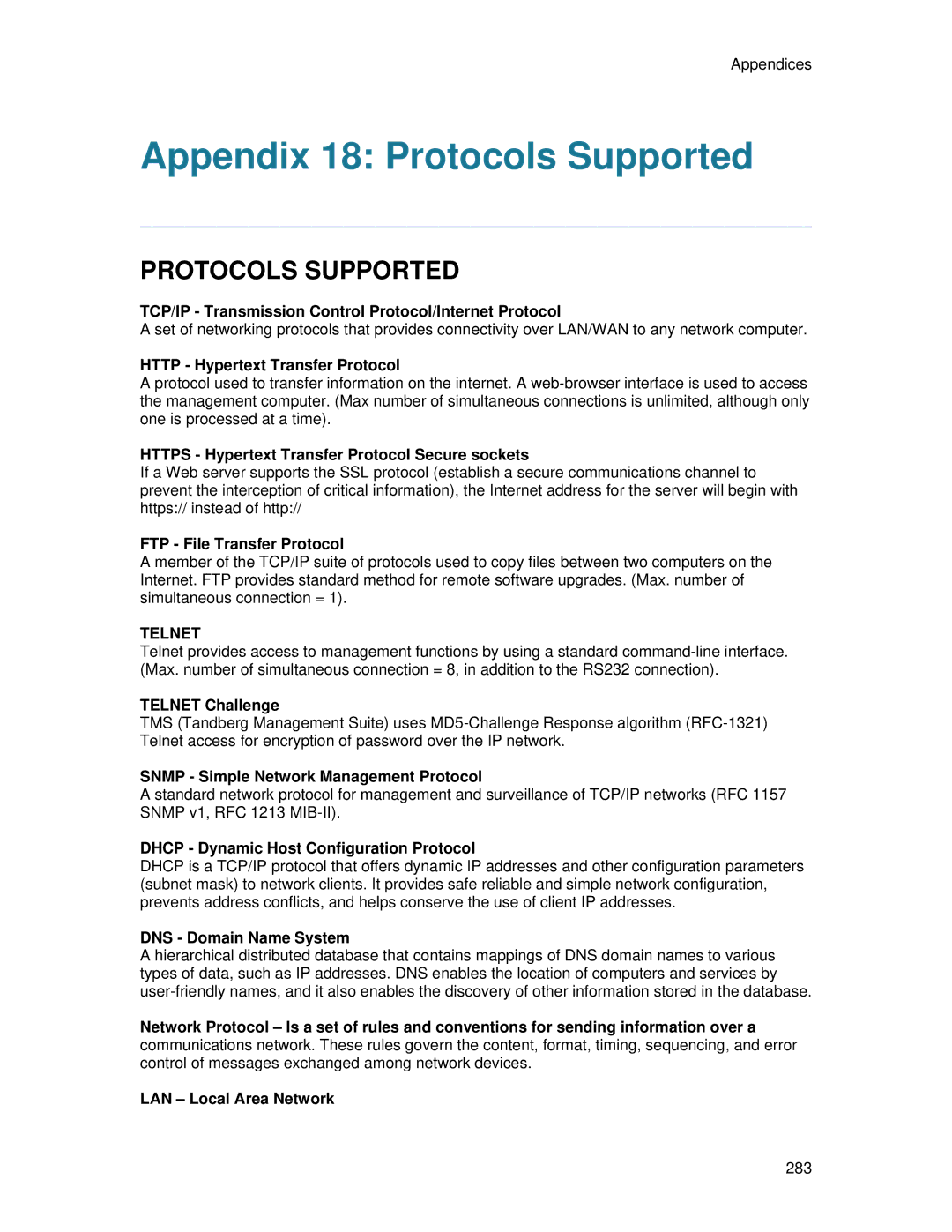Appendices
Appendix 18: Protocols Supported
PROTOCOLS SUPPORTED
TCP/IP - Transmission Control Protocol/Internet Protocol
A set of networking protocols that provides connectivity over LAN/WAN to any network computer.
HTTP - Hypertext Transfer Protocol
A protocol used to transfer information on the internet. A
HTTPS - Hypertext Transfer Protocol Secure sockets
If a Web server supports the SSL protocol (establish a secure communications channel to prevent the interception of critical information), the Internet address for the server will begin with https:// instead of http://
FTP - File Transfer Protocol
A member of the TCP/IP suite of protocols used to copy files between two computers on the Internet. FTP provides standard method for remote software upgrades. (Max. number of simultaneous connection = 1).
TELNET
Telnet provides access to management functions by using a standard
TELNET Challenge
TMS (Tandberg Management Suite) uses
SNMP - Simple Network Management Protocol
A standard network protocol for management and surveillance of TCP/IP networks (RFC 1157 SNMP v1, RFC 1213
DHCP - Dynamic Host Configuration Protocol
DHCP is a TCP/IP protocol that offers dynamic IP addresses and other configuration parameters (subnet mask) to network clients. It provides safe reliable and simple network configuration, prevents address conflicts, and helps conserve the use of client IP addresses.
DNS - Domain Name System
A hierarchical distributed database that contains mappings of DNS domain names to various types of data, such as IP addresses. DNS enables the location of computers and services by
Network Protocol – Is a set of rules and conventions for sending information over a communications network. These rules govern the content, format, timing, sequencing, and error control of messages exchanged among network devices.
LAN – Local Area Network
283
